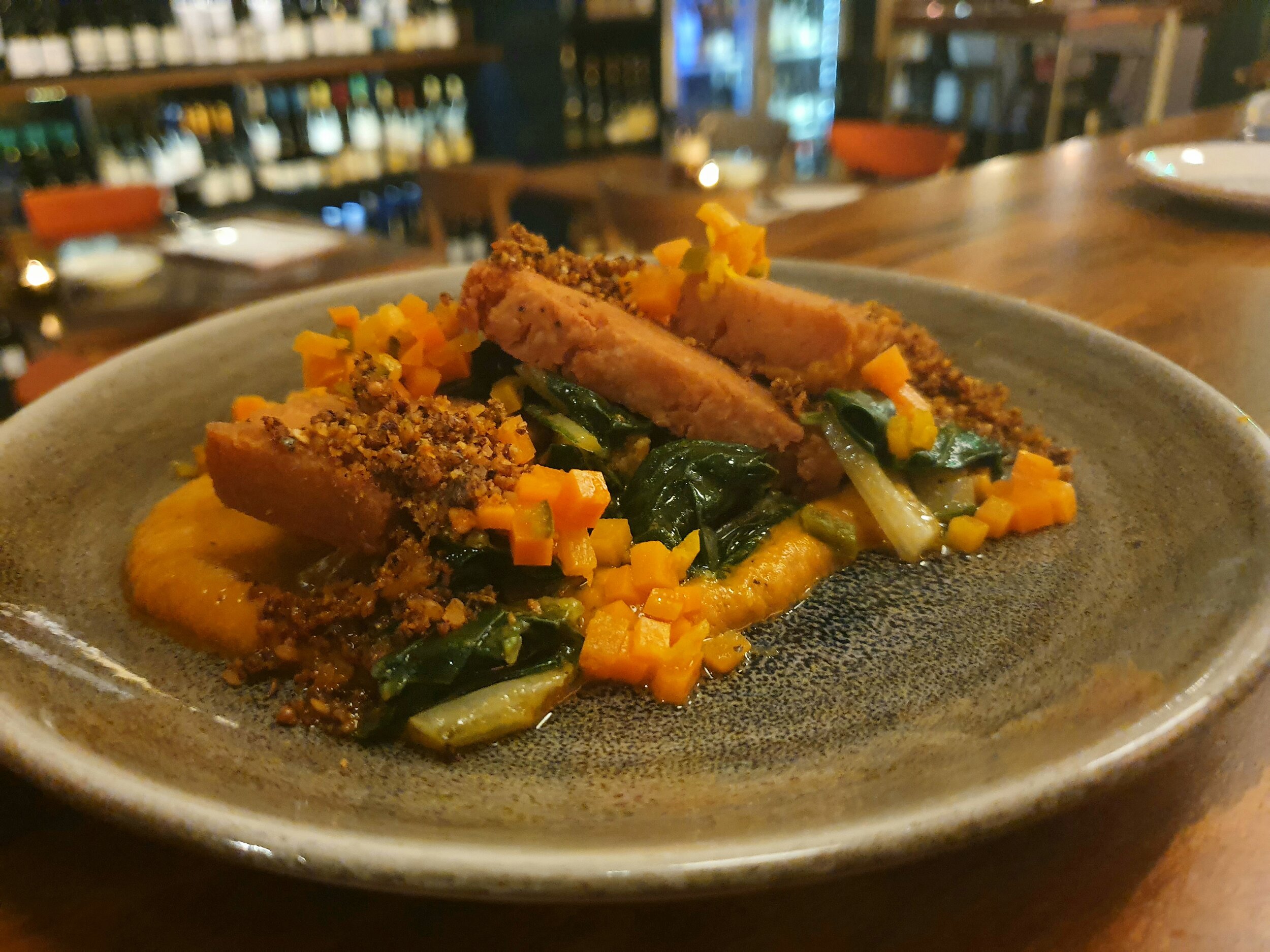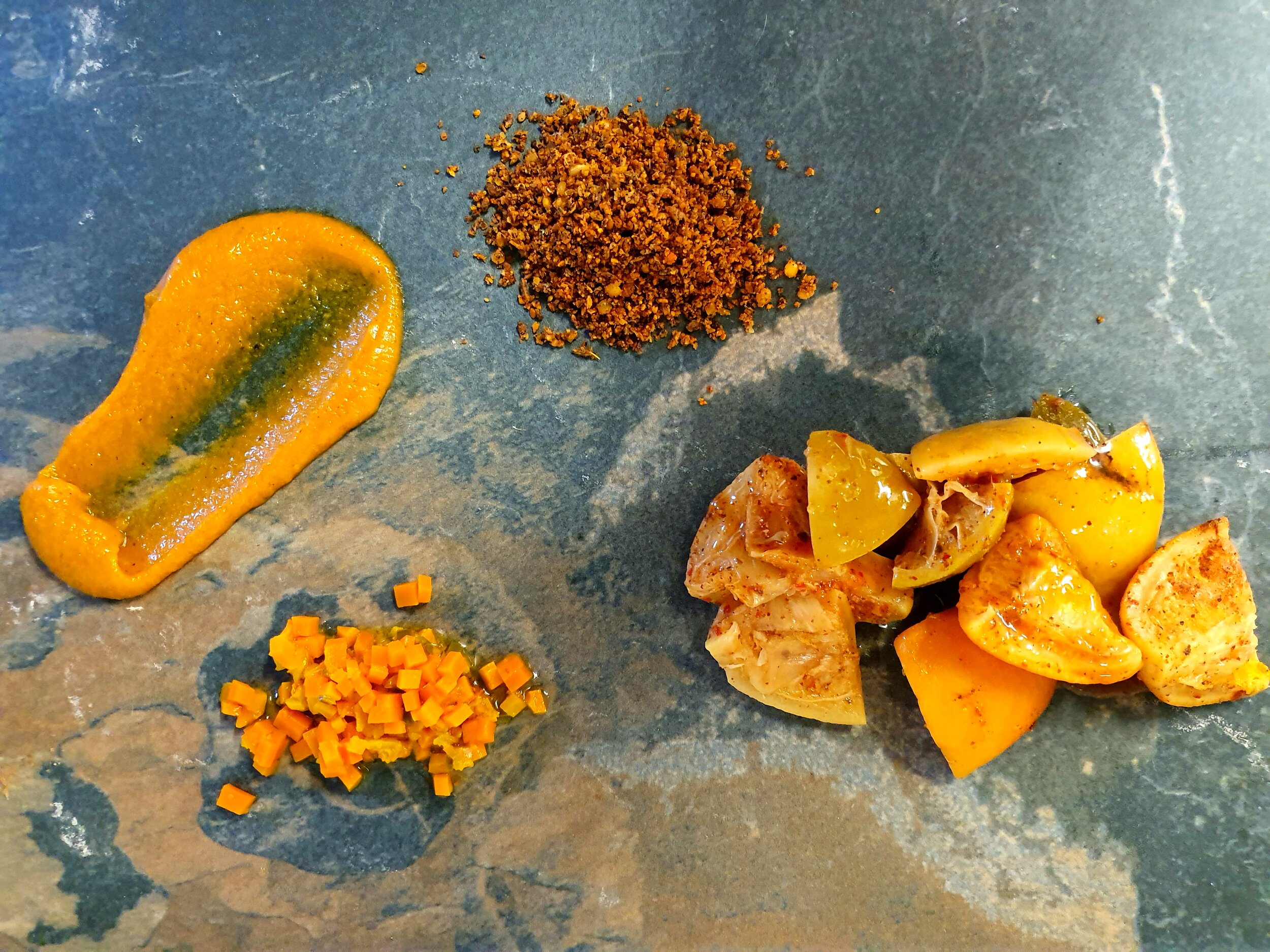Building flavour: the anatomy of a dish
This new year we have been spending some time developing our plant based options. Our plates aim to be as exciting and engaging without meat and fish as the star. We love getting deliveries of vegetables from local farms providing seasonal inspirations. But flavour can also be built through cooking and preserving techniques. In this blog I explore some of the techniques in our dish, ‘Chickpea panisse, roasted carrots, cultured carrot and lemon, fenugreek’.
Caramelised carrot puree
By cooking the carrots over high heat we are creating complex flavour from the transformation natural sugars through caramelization and from the amino acids through the Maillard reaction. The products of these different reactions can present as toasty, nutty, rum like, umami and buttery flavours.
Chutney pudi
‘Dry’ chutney is a traditional spice mixture that has extra body provided by pulses and nuts to add both texture and flavour in southern Indian cuisine. In this element of the dish we use traditional and new components to create the effects we desire.
Lentils are dry fried in a pan which causes the starches to brown in the same way as toast, another example of the Maillard reaction. We also caramalise the sugars in the coconut by toasting it add more complexity. Onions are dehydrated, which achieves our textural goals as well as concentrating flavour. Malic acid adds bright apple like acidity which balances the sweet, bulby and umami flavours promotes fruit flavours. Lastly and most importantly we toast the spices which both drives the flavourful oils from within the cells to outside, where they can be accessed by the eaters tongue and retronasal system, and catalyses reactions that create further complex flavour compounds.
Cultured carrot pickle
Lacto-fermented pickled vegetables have become fashionable in recent years. But why ferment vegetables aside from the health and preservation benefits The different strains of lactic acid bacteria break down and change molecules within the food allowing us to enjoy drastically different tastes. The primary product of this fermentation is latic acid which in its self can enhance other flavours and bring brightness to the dish. There are other more complex reactions going on as well that add all sorts of secondary flavours and complexity. With this pickle the long fermentation breaks down unpalatable bitter compounds in the raw lemon zest and tames the astringent quality of raw turmeric and garlic.
Processing vegetables
With refrigeration and modern logistics it is no longer so imperative to preserve vegetables. But techniques including cooking, fermenting and drying that have been developed by humans over centuries for preservation have another huge benefit. Often there are flavour and nutritional compounds otherwise unavailable in raw plants that can be released by the chemical reactions. These reactions are promoted by processes developed in cultures across the world and optimized to different ingredients. They create a myriad of different flavours and provide the backbone to every cuisine. The journey to discover these, understand them and see how they work synergistically in a dish is one of the great joys of cooking.

